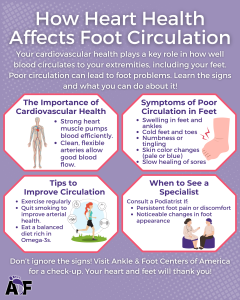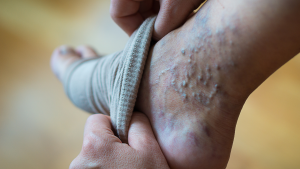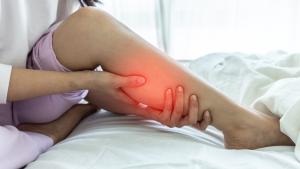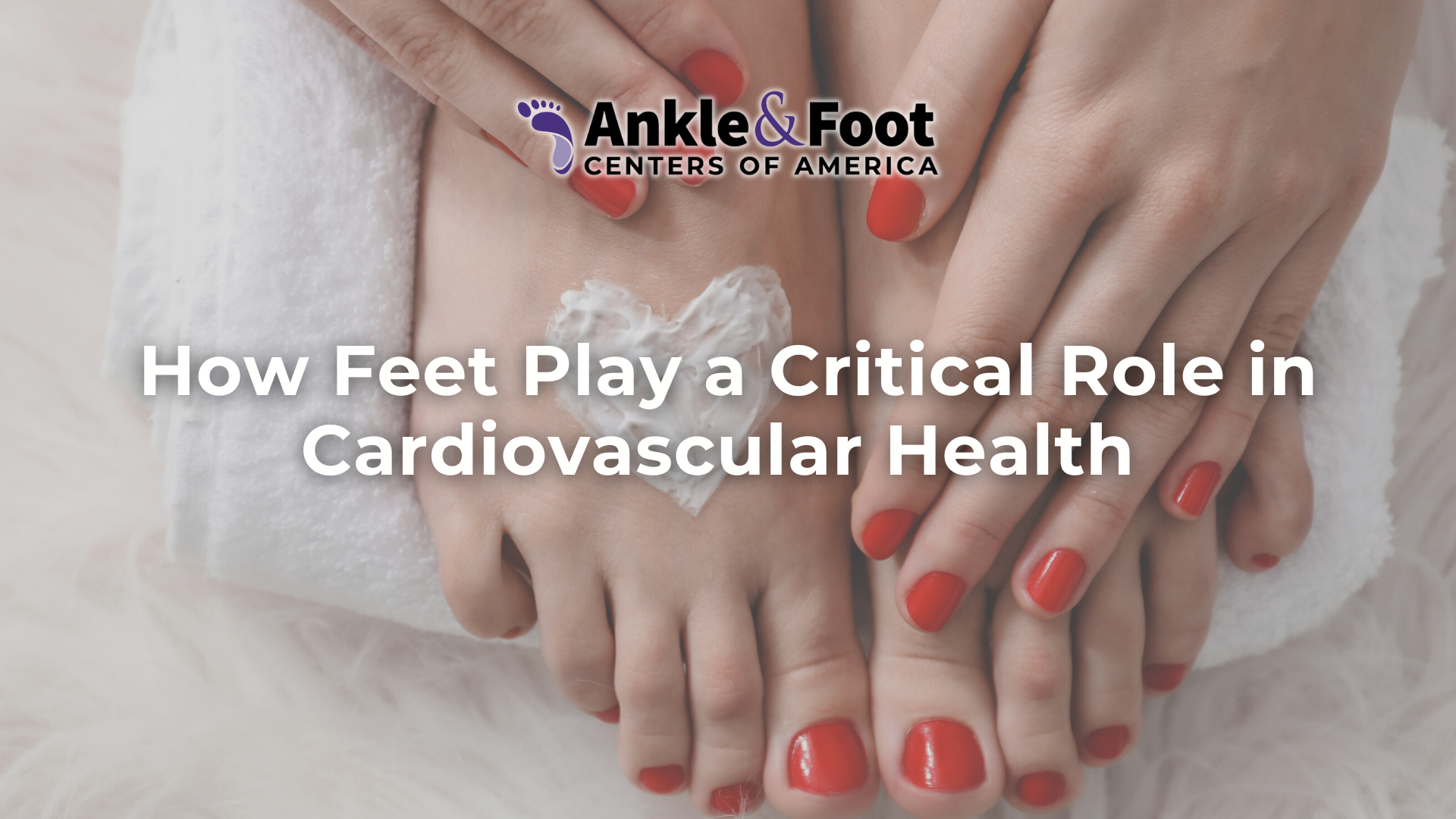When you think of heart health, odds are you don’t think about your feet. But your feet can play a critical role in the early detection of cardiovascular issues. With February being American Heart Month, it’s a good time to learn more about the connection between your feet and heart.
In this blog, we’ll cover:
- Common symptoms of cardiovascular concerns
- The basics of peripheral arterial disease
- The importance of blood circulation
- How Ankle & Foot Centers of America can help
Table of Contents
 Common Symptoms of Cardiovascular Concerns
Common Symptoms of Cardiovascular Concerns
The top-rated podiatrists at Ankle & Foot Centers of America know that seemingly minor foot symptoms can signal cardiovascular concerns. Those symptoms can be:
- Persistent leg aches and pains
- Unexpected swelling
- Wounds that don’t fully heal
If you’re experiencing any of these symptoms, this could be your body’s way of raising a red flag on your overall circulatory health, signaling the onset of cardiovascular diseases like peripheral artery disease (PAD).
Understanding Peripheral Arterial Disease
Peripheral arterial disease (PAD) is the formation of “plaques,” deposits of fat, cholesterol and other substances, in the arteries carrying blood to the limbs. The deposits can narrow or block the artery, preventing enough blood and oxygen from getting through to the legs and feet.
About 12 million Americans – and about 10 to 15 percent of Americans over 50 – have been diagnosed with PAD. Because patients often ignore or overlook the problem, doctors estimate many more people actually have the disease – an estimated 200 million people worldwide.
How Circulation Problems Affect Your Feet and Legs
 When blood can’t get through your arteries to nourish organs and other tissues, the result is tissue damage. PAD typically first appears pain in your leg during walking or exercise, a sign that oxygen isn’t getting through to muscles and other tissues in your lower extremities.
When blood can’t get through your arteries to nourish organs and other tissues, the result is tissue damage. PAD typically first appears pain in your leg during walking or exercise, a sign that oxygen isn’t getting through to muscles and other tissues in your lower extremities.
PAD also increases the likelihood that you will develop sores or wounds on your legs or feet. These sores can turn into areas of dead tissue, called gangrene, that can make it tragically necessary amputate your foot or leg.
While the prognosis sounds grim, there’s good news: Your awareness of your body’s signals – and proactive care – can make all the difference.
How Ankle & Foot Centers of America Can Help
 Our approach goes beyond traditional podiatry. We provide comprehensive evaluations that explore the entire circulatory picture to identify potential issues before they evolve into more serious problems. That includes:
Our approach goes beyond traditional podiatry. We provide comprehensive evaluations that explore the entire circulatory picture to identify potential issues before they evolve into more serious problems. That includes:
- Vascular evaluations: Advanced diagnostic tools to evaluate circulation and detect possible vascular issues.
- Circulation assessments: Comprehensive assessments to identify the health of blood flow in the lower extremities.
- Wound care: Specialized treatment plans for patients with ulcers, non-healing wounds, and infections.
- Personalized treatment plans: Customized care plans to support each patient’s specific needs and medical history.
During American Heart Month, we encourage you to broaden your perspective about your health. Our team of expert podiatrists and vascular specialists are here to support you and help you be proactive in your healthcare journey.





